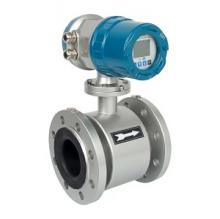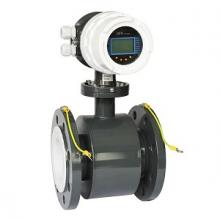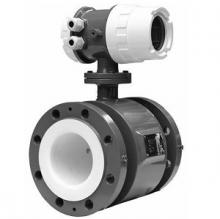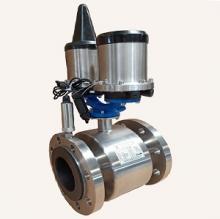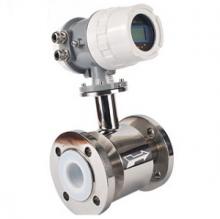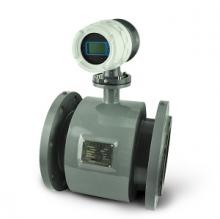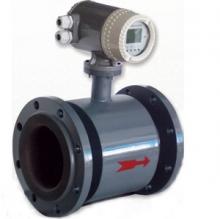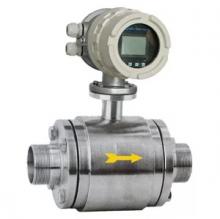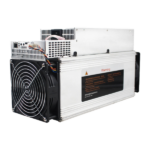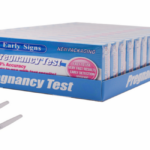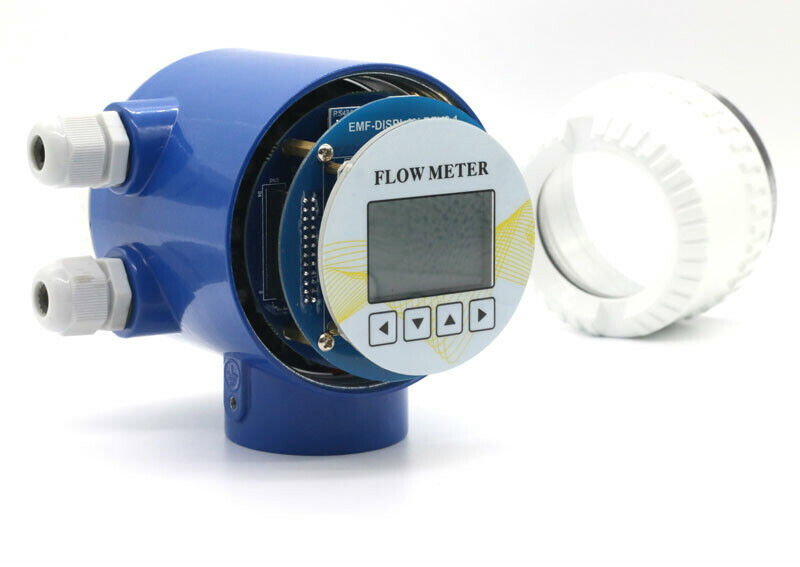
Magnetic flow meters, also known as mag meters, are devices used to measure the flow rate of a fluid. Unlike other flow meters that rely on obstructions or pressure differential to calculate flow rate, magnetic flow meters use Faraday’s Law of electromagnetic induction.
A mag meter consists of a tube lined with a non-conductive material and two electrodes mounted perpendicular to the axis of the tube. A magnetic field is applied across the electrodes and perpendicular to the direction of fluid flow. As the conductive fluid passes through the tube, it acts as a conductor of voltage and creates an electromotive force (EMF) proportional to the velocity of the fluid. The EMF is detected by the electrodes and sent to a transmitter which converts the signal into a digital output displaying the flow rate.
Historical Background of Magnetic Flow Meters
The first magnetic flow meter was invented in 1954 by Charles R. Weisgerber while he was working at the Foxboro Company. Weisgerber’s invention was based on his discovery that Faraday’s Law could be applied to measure the flow rate of fluids without the need for moving parts. Initially developed for military aircraft fuel monitoring applications, magnetic flow meters quickly found their way into industrial applications due to their high accuracy and reliability.
Over the years, enhancements in technology have led to advancements in magnetic flow meters, resulting in more accurate readings, improved durability, and wider application in various industries. Today, magnetic flow meters continue to evolve with the integration of smart technologies, making them a popular choice for flow measurement across many different fields.
Top 8 Affordable Magnetic Flow Meters: A Selection by Silverinstruments
Magnetic flow meters are widely used for monitoring the flow rate of liquids in many different industries due to their accuracy and reliability. While some high-end mag meters can be expensive, there are plenty of affordable options available that still offer excellent performance. Here we have compiled a list of the top 8 affordable magnetic flow meters, selected by Silverinstruments.
1, Magnetic type flow meter
A Magnetic flow meter, also known as a mag meter or electromagnetic flow meter, is a device that measures fluid flow by detecting the voltage generated across electrodes inserted in a conducting liquid. It is based on Faraday’s law of electromagnetic induction which states that the voltage induced across any conductor as it moves at right angles through a magnetic field is proportional to the velocity of that conductor. In simpler terms, the magnetic flow meter uses two magnetic coils to generate a magnetic field that passes through the fluid being measured and the electrodes detect the voltage generated across the fluid. This voltage is proportional to the fluid flow rate, which is then measured and displayed by the meter. Magnetic flow meters are highly accurate and reliable, have no moving parts, and are not affected by changes in fluid density, viscosity, temperature or pressure making them well-suited for many industries including water treatment, chemical processing, food and beverage and many more.
2, Magnetic inductive flow meter
A magnetic inductive flow meter (EMF) uses Faraday’s electromagnetic induction law to measure the volumetric flow rate of conductive liquid. Magnetic flow sensors (EMF) were developed in the early 1950s for industrial applications. From the late 1970s to the late 1980s, the rectangular wave method of excitation gradually replaced the earlier power-frequency AC method.
3, Magnetic flow indicator
With the help of Faraday’s law of electromagnetic induction, the electromagnetic flow meter (EMF) measures the volumetric flow rate of conductive liquids. It was invented in the early 1950s for industrial use. For measuring conductive liquids in all industries, the full bore electromagnetic flow meter is a cost-effective flowmeter. Small in size and flexible in installation, inductive flow meters are popular with factories, equipment manufacturers, and system integrators.
4, GPRS Electromagnetic flow meter
The battery powered electromagnetic flow meter comes with a lithium battery that lasts 36-72 months, and the device is equipped with a built-in GPRS/GSM/CDMA module so that the flow measurement value can be sent to a cloud server, allowing for wireless and remote water management. In addition to irrigation and abstraction, water treatment, municipal works, and the water industry, GPRS magnetic water flow meters have a wide variety of applications.
5, Electromagnetic flow meter for corrosive liquid
Electromagnetic flow meters can measure corrosive strong acids or strong alkali liquids by choosing different liners and electrode materials. According to Faraday’s law of electromagnetic induction, a magnetic flowmeter measures the volumetric flow of conductive medium within a tube. Besides measuring general conductive fluid flow, it also measures liquid-solid two-phase flow, high viscosity liquid flow, salt flow, strong acids flow, and strong alkali flow volume flow. Chemical, environmental protection, metallurgy, medicine, paper, water supply, and drainage industries all use mag flowmeters.
6, Wastewater Flow Meter
A wastewater flow meter is a device used to measure the flow rate of wastewater. It is typically installed in a section of a pipe where the flow is relatively constant and can provide accurate measurements of the volume of wastewater passing through the pipe over time. These meters are important for monitoring and controlling wastewater treatment processes and ensuring compliance with regulations. There are several types of wastewater flow meters, including electromagnetic, ultrasonic, and mechanical meters, each with their own advantages and disadvantages. The specific type of meter chosen will depend on factors such as the characteristics of the wastewater being measured, the accuracy required, and the budget available.
7, Full bore electromagnetic flow meter
Full bore electromagnetic flowmeters are flow measurement instruments made by the principle of electromagnetic induction, and can be used to measure the volume flow (flow) of conductive liquids. The magnetic flow sensor has almost no pressure loss, no moving parts inside, and easy to solve the flow measurement of corrosive media with its electrodes and lining. Temperature, pressure, density, and flow state of the measured medium are not affected during the detection process, and measurement hysteresis is not present.
8, Threaded magnetic flow meter
A threaded magnetic flow meter is a type of electromagnetic flow meter that is designed to be installed in pipelines using threaded or flanged connections. This type of meter uses the principles of Faraday’s law of electromagnetic induction to measure the volumetric flow rate of conductive fluids. Threaded magnetic flow meters are constructed with a non-magnetic liner, such as Teflon, which allows them to be used for a wide range of applications including wastewater and process water, chemicals, and slurries. They are particularly useful for measuring flows that contain solids or other particles that could interfere with other types of flow meters. The data generated by the threaded magnetic flow meter can be used for process control, inventory management, and compliance reporting purposes.

